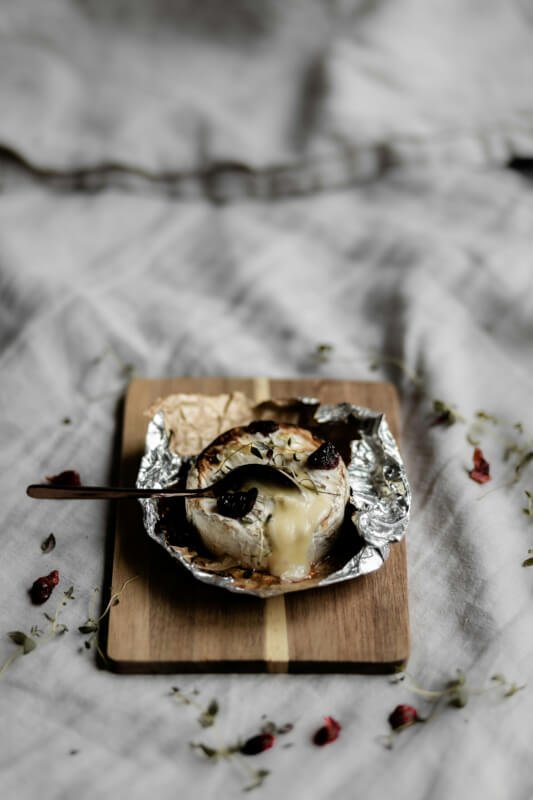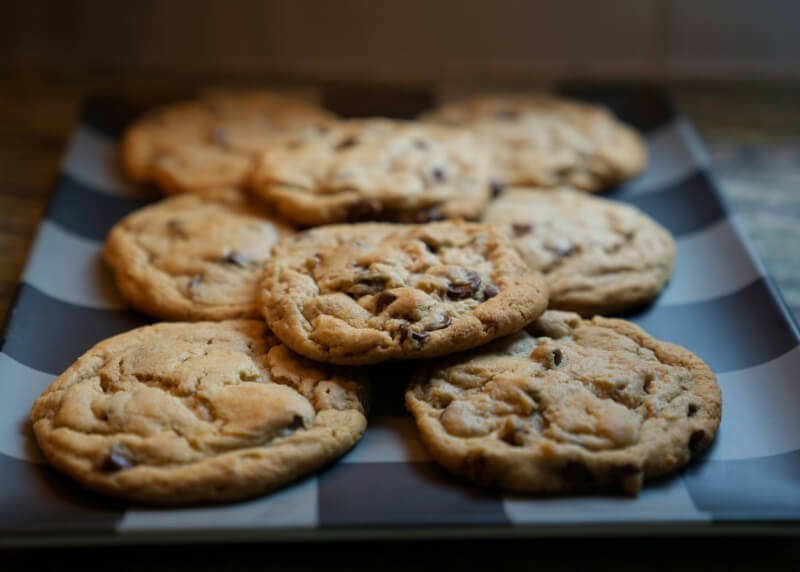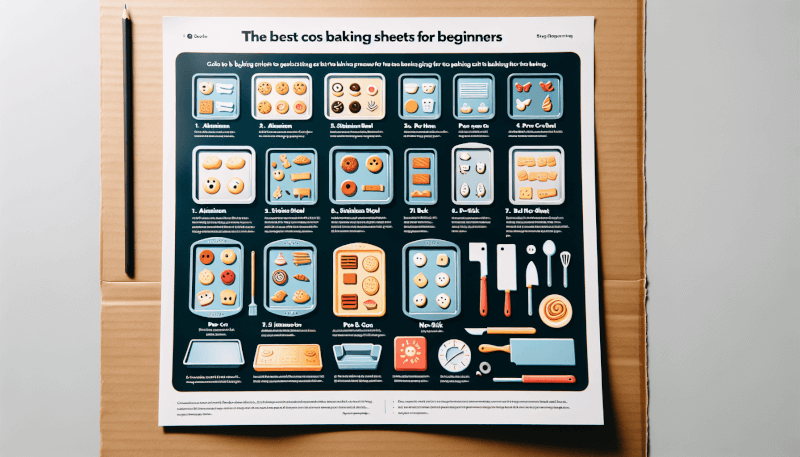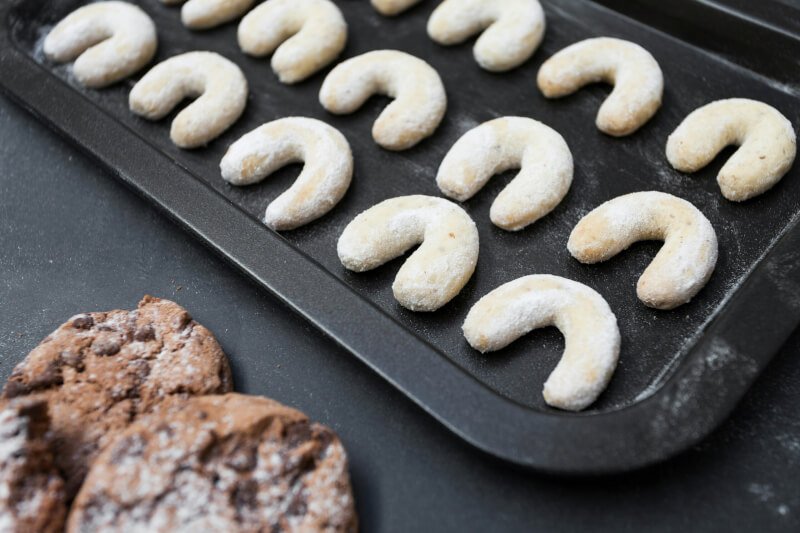Whether you’re a seasoned baker or just starting out in the kitchen, finding the right baking sheet can make a world of difference in the outcome of your baked goods. From cookies to pizzas, the right baking sheet can ensure even heating, prevent burnt bottoms, and make clean-up a breeze. In this beginner’s guide, we’ll explore the key factors to consider when choosing the best baking sheets, including material, size, and durability. So get ready to elevate your baking game and whip up delicious treats with confidence!
Material
Aluminum
Aluminum baking sheets are a popular choice among bakers due to their excellent heat conductivity. They heat up quickly and distribute heat evenly, ensuring your baked goods are cooked to perfection. Aluminum baking sheets are also lightweight, making them easy to handle and maneuver. Additionally, they are durable and resistant to warping, allowing them to maintain their shape even with regular use. However, aluminum pans can react with acidic ingredients, leading to a metallic taste in your food. To avoid this, it is recommended to use parchment paper or silicone baking mats when using aluminum baking sheets.
Stainless Steel
Stainless steel baking sheets are known for their durability and resistance to corrosion. They are heavy-duty and can withstand high temperatures without warping or discoloring. Stainless steel pans are also versatile and can be used for a variety of cooking methods, including baking, roasting, and broiling. They are easy to clean and dishwasher-safe, making them convenient for everyday use. However, stainless steel baking sheets tend to have lower heat conductivity compared to other materials, so it may take longer for your baked goods to cook evenly.
Carbon Steel
Carbon steel baking sheets combine the durability of steel with the excellent heat conductivity of carbon. They heat up quickly and distribute heat evenly, resulting in perfectly baked goods every time. Carbon steel pans are lightweight and resistant to warping, making them suitable for regular use. They can also withstand high temperatures and are often used by professional bakers. However, carbon steel pans require proper seasoning and maintenance to prevent rusting. They should be hand-washed and dried thoroughly after each use.
Ceramic
Ceramic baking sheets are a popular choice for those looking for a non-toxic and non-reactive option. They are made from natural clay and minerals, and are free of any coatings or chemicals. Ceramic pans heat up slowly and retain heat well, providing even and gentle heat distribution for delicate baked goods. They are also naturally non-stick, eliminating the need for greasing or parchment paper. Ceramic baking sheets are easy to clean and dishwasher-safe. However, they can be fragile and may crack or chip if dropped or exposed to extreme temperature changes.
Silicone
Silicone baking sheets are a versatile and convenient option for both baking and cooking. They are made from food-grade silicone, which is heat-resistant and non-stick. Silicone pans can withstand high temperatures and are oven-safe, freezer-safe, and microwave-safe. They are flexible and easy to store, taking up minimal space in your kitchen. Silicone baking sheets are also dishwasher-safe, making cleanup a breeze. However, silicone pans may not provide the same level of browning or crispness as other materials, so they may not be ideal for achieving certain textures in baked goods.
Glass
Glass baking sheets offer excellent heat conductivity and provide even heat distribution for consistent baking results. They are also non-reactive and won’t impart any unwanted flavors or odors to your food. Glass pans are durable and resistant to scratches, making them suitable for everyday use. They are also easy to clean and dishwasher-safe. However, glass baking sheets can be heavy and may require additional care when handling to avoid breakage. It is also important to note that glass pans may take longer to heat up compared to other materials.
Size
Standard Sheet Pan
Standard sheet pans, also known as full-size sheet pans, measure approximately 18 inches by 26 inches. They are commonly used in commercial baking and can accommodate large batches of cookies, pastries, or other baked goods. Standard sheet pans are versatile and can be used for various purposes, such as roasting vegetables or baking sheet cakes.
Half Sheet Pan
Half sheet pans are the most common size for home baking. They measure approximately 13 inches by 18 inches and are a popular choice for baking cookies, sheet cakes, or roasting vegetables. Half sheet pans fit well in most standard ovens and are easy to handle.
Quarter Sheet Pan
Quarter sheet pans are smaller in size, measuring approximately 9 inches by 13 inches. They are great for baking small batches of cookies, reheating leftovers, or toasting nuts and seeds. Quarter sheet pans are also suitable for compact ovens or limited counter space.
Jelly Roll Pan
Jelly roll pans, also known as rimmed baking sheets, have a slightly larger surface area than half sheet pans. They feature a 1-inch high rim all around the sheet, which helps contain juices and prevents spills. Jelly roll pans are ideal for making sheet cakes, rolls, and other baked goods that require a higher rim.
Cookie Sheet
Cookie sheets are typically rimless and have a flat surface, making them perfect for baking cookies. They come in various sizes, allowing you to choose the right size for your baking needs. Cookie sheets are also versatile and can be used for roasting vegetables or heating frozen foods.
Custom Sizes
If the standard sizes do not meet your specific baking requirements, there are also custom-sized baking sheets available. These can be ordered to fit your desired dimensions and are often used in professional kitchens or for specialty baking purposes. Custom-sized baking sheets give you the flexibility to create unique and tailored baked goods.
Thickness
Standard Gauge
Standard gauge baking sheets are the most common and widely available option. They are typically around 18 to 20 gauge, which is approximately 0.0403 to 0.0359 inches thick. Standard gauge pans are suitable for most baking needs and provide even heat distribution for consistent results.
Heavy Gauge
Heavy gauge baking sheets are thicker and more durable than standard gauge pans. They are around 12 to 14 gauge, which is approximately 0.0781 to 0.0795 inches thick. Heavy gauge pans are ideal for professional bakers or those who frequently bake large quantities. They can withstand high temperatures and are resistant to warping.
Non-Standard Gauge
Non-standard gauge baking sheets refer to pans that fall outside the typical range of standard or heavy gauge. They may be thinner or thicker than the standard options, depending on the manufacturer and intended use. Non-standard gauge pans can provide different levels of heat conductivity and may require adjustments in baking time or temperature.
Coating
Non-stick Coating
Non-stick coating is a popular feature found on many baking sheets. It allows food to release easily from the pan, making cleanup a breeze. Non-stick coating also reduces the need for greasing or using parchment paper, resulting in healthier cooking. However, it is important to note that non-stick coatings can wear off over time and may need to be replaced. They are also not suitable for use with metal utensils, as they can damage the coating.
Natural Finish
Baking sheets with a natural finish do not have any additional coatings or treatments. They are made from the bare material, such as aluminum or stainless steel, without any added non-stick properties. Natural finish pans require greasing or the use of parchment paper to prevent sticking. While they may provide a more authentic baking experience, they can require a bit more effort to clean.

Heat Conductivity
Even Heat Distribution
Baking sheets with even heat distribution ensure that your baked goods are cooked uniformly, without any hotspots. This is especially important for delicate pastries or recipes that require precise baking times and temperatures. Materials like aluminum and stainless steel are known for their excellent heat conductivity and can provide consistent results.
Quick and Even Heat Transfer
Some baking sheets are designed to transfer heat quickly and evenly, allowing for faster baking times. This is particularly beneficial when you have limited time or need to bake multiple batches in quick succession. Carbon steel and some thicker aluminum pans are known for their quick and even heat transfer properties.
Slower Heat Transfer
Certain baking sheets, such as ceramic or glass, have slower heat transfer properties. This can be advantageous when you want a more gentle heat for delicate or sensitive baked goods. Slower heat transfer allows for slower and more controlled baking, resulting in moist and tender outcomes.
Durability
Long-lasting
Durability is an essential factor to consider when choosing a baking sheet. You want a pan that can withstand frequent use and maintain its quality over time. Aluminum, stainless steel, and carbon steel baking sheets are known for their durability and can withstand the demands of regular baking. They are resistant to warping, dents, and scratches, ensuring they will last for years to come.
Resistant to Warping
Warping is a common issue with baking sheets, especially when exposed to high temperatures or sudden temperature changes. It can affect the performance of the pan and lead to uneven baking. Opting for baking sheets made from materials like aluminum or carbon steel, which are resistant to warping, will ensure consistent results.
Scratch-resistant
Baking sheets that are scratch-resistant are more likely to maintain their appearance and functionality over time. Stainless steel and ceramic baking sheets are known for their scratch-resistant properties, keeping them looking new even after numerous uses.
Corrosion-resistant
Corrosion can occur when baking sheets are exposed to moisture or certain acidic ingredients. Choosing baking sheets made from materials like stainless steel or aluminum, which are corrosion-resistant, ensures longevity and prevents any undesirable reactions.

Weight
Lightweight
Lightweight baking sheets are easy to handle and maneuver, making them convenient for everyday use. Aluminum and silicone baking sheets are known for their lightweight properties, allowing you to move them around the kitchen with ease. If you have limited upper body strength or frequently need to transport your baking sheets, opting for lightweight options may be more suitable.
Medium Weight
Medium weight baking sheets strike a balance between being sturdy and manageable. They offer enough heft to withstand regular use without being too cumbersome. Stainless steel baking sheets are often medium weight, providing a reliable and versatile option for most baking needs.
Heavyweight
Heavyweight baking sheets are durable and robust, designed for heavy-duty use. They can withstand high temperatures, resist warping, and provide superior heat distribution. Carbon steel baking sheets are a popular choice for professional bakers or those who frequently bake large quantities due to their heavyweight and durable construction.
Rim Type
Open-ended Rim
Baking sheets with an open-ended rim have a slightly raised edge that helps contain liquids and prevent spills. They are versatile and suitable for a wide range of baked goods, from cookies to roasted vegetables. Open-ended rim baking sheets provide more flexibility when it comes to using utensils and removing baked goods from the pan.
Limited Rim
Baking sheets with a limited rim feature a smaller raised edge compared to open-ended rim pans. They provide some containment for liquids but are more suitable for recipes that do not release excess moisture or during processes that require easy access to the baked goods.
No Rim
Baking sheets without a rim, also known as flat baking sheets, offer a completely flat surface without any raised edges. They are ideal for recipes that require easy sliding or lifting of delicate baked goods, such as cookies or pastries. Flat baking sheets are also versatile and can double as a surface for kneading dough or rolling out pastry.

Versatility
Multipurpose Use
Versatile baking sheets are a great addition to any kitchen. They can be used for a variety of baking needs, such as baking cookies, roasting vegetables, or making sheet cakes. Aluminum and stainless steel baking sheets are known for their versatility and can handle different cooking methods, such as broiling or grilling.
Oven-safe
Most baking sheets are oven-safe, allowing you to transfer them directly from the counter to the oven. However, it is essential to check the manufacturer’s instructions to determine the maximum temperature the pan can withstand. Some materials, like silicone or certain non-stick coatings, may have temperature limits.
Grill-safe
If you enjoy outdoor cooking, having baking sheets that are grill-safe can be a game changer. Certain materials, such as stainless steel, aluminum, or ceramic, are suitable for use on a grill. They allow you to bake or roast food outdoors, adding delicious smoky flavors to your recipes.
Freezer-safe
Freezer-safe baking sheets are convenient for storing pre-made dough, leftovers, or freeze-ahead meals. Aluminum, stainless steel, and silicone pans are often freezer-safe and can withstand low temperatures without any issues. Make sure to check the manufacturer’s instructions to ensure your baking sheets can be safely used in the freezer.
Broiler-safe
Broiler-safe baking sheets are designed to withstand the intense heat of a broiler. This is especially important when using the broil setting to brown the top of casseroles or melt cheese. Materials like stainless steel or aluminum are typically broiler-safe and can handle the high temperatures without warping or discoloration.
Dishwasher-safe
Dishwasher-safe baking sheets are a time-saving feature for easy cleanup. Stainless steel, silicone, and certain non-stick coated pans are often dishwasher-safe. However, it is important to check the manufacturer’s instructions to ensure the longevity of your baking sheets. Hand-washing is generally recommended for pans with natural finishes or delicate materials, such as ceramic or glass.
Price Range
Budget-friendly
Budget-friendly baking sheets are often made from materials like aluminum or stainless steel. They offer reliable performance at an affordable price, making them suitable for beginners or casual bakers. While they may not have all the features of higher-end options, they can still produce delicious results.
Mid-range
Mid-range baking sheets are often made from durable materials like carbon steel or stainless steel. They offer a balance between affordability and quality and can withstand regular use. These baking sheets often have additional features, such as non-stick coating or a higher gauge, making them a versatile choice for most home bakers.
High-end
High-end baking sheets are typically made from premium materials like ceramic or heavy gauge stainless steel. They often come with additional features, such as non-stick coatings or unique designs. These baking sheets are popular among professional bakers or those who want the best performance and durability. While they may come with a higher price tag, they are designed to last and deliver exceptional results.




